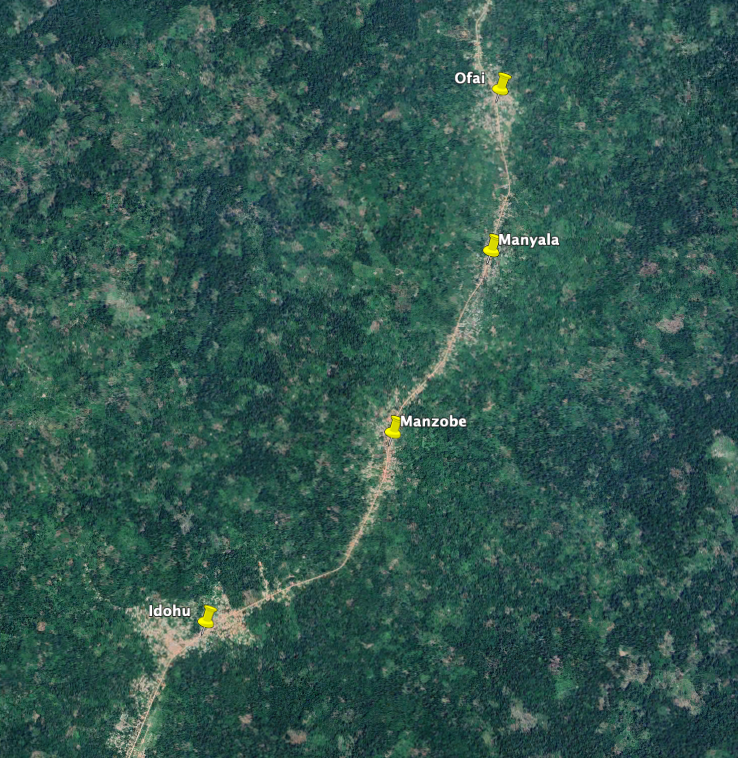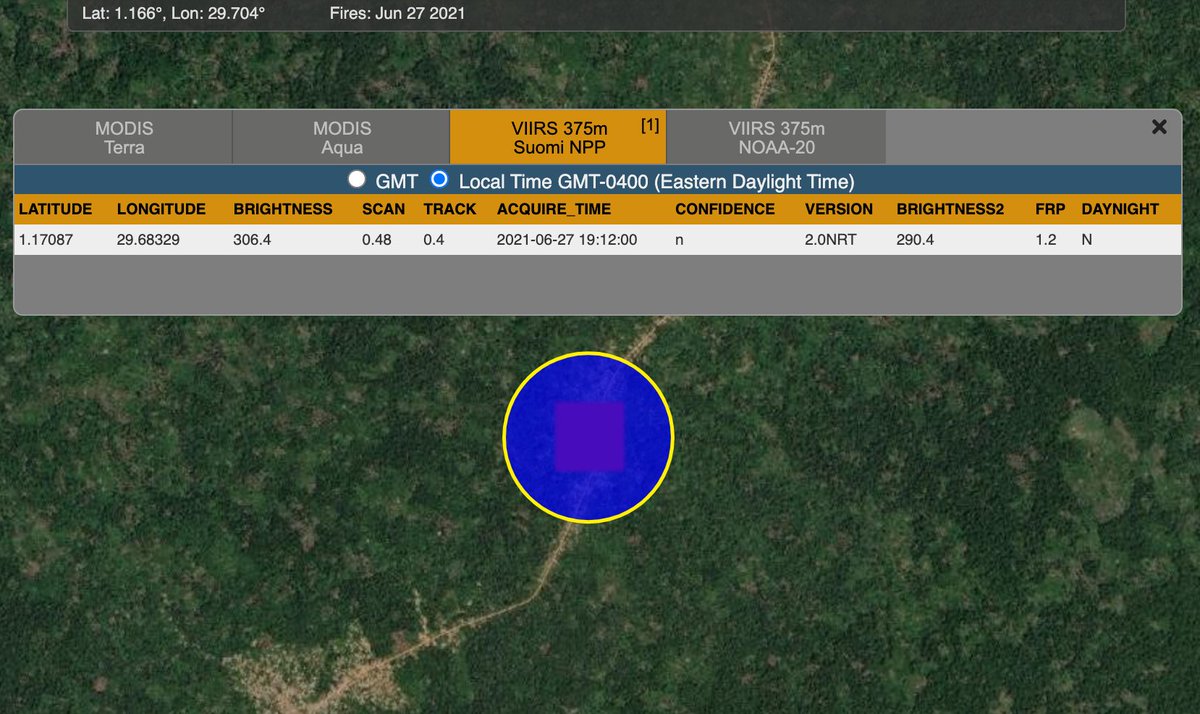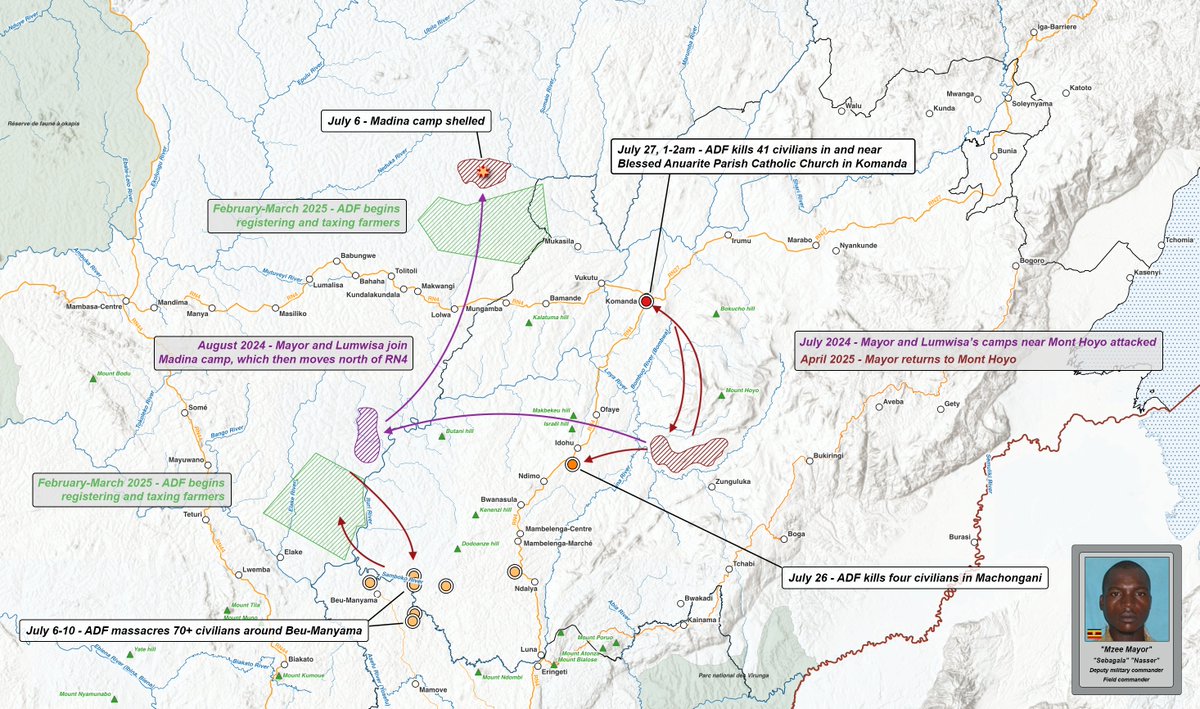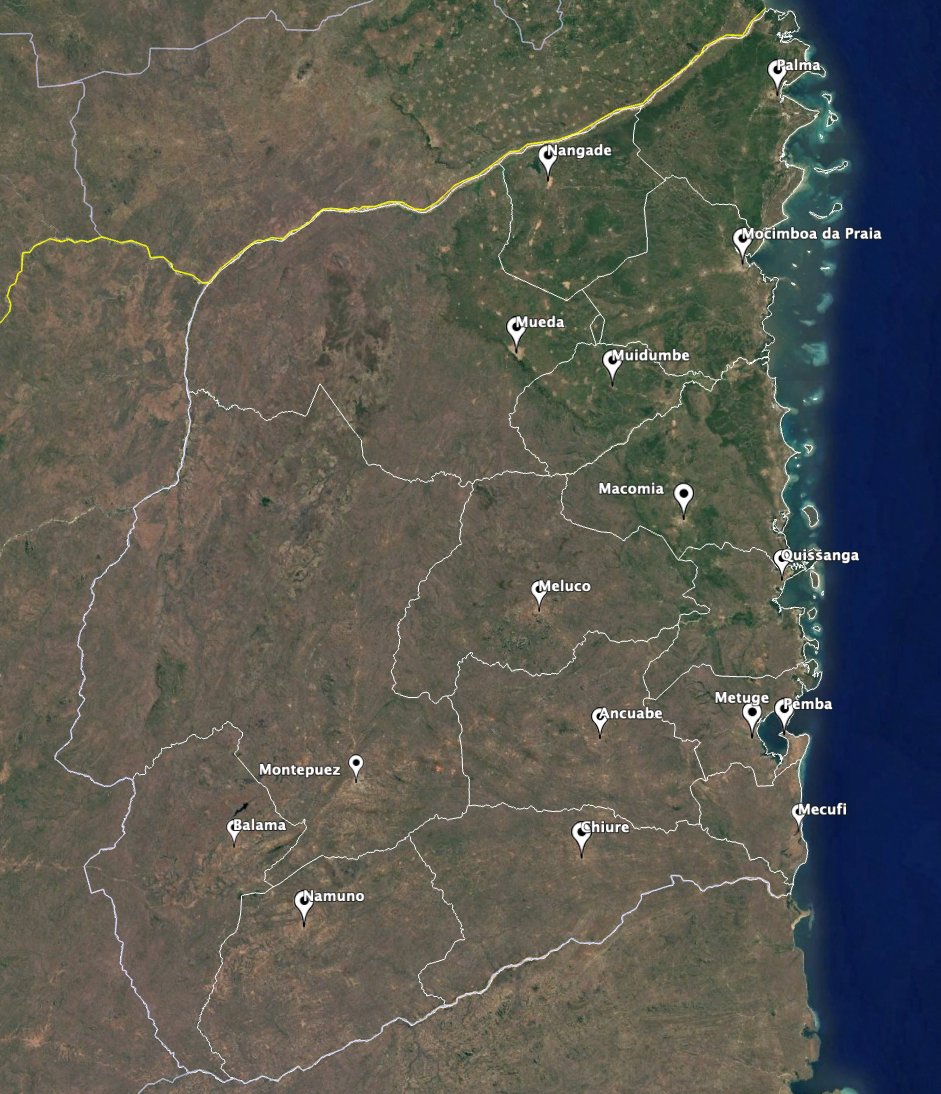Islamic State released photos today of the June 27 ISCAP-ADF attack on Manyala village in Ituri that IS first claimed yesterday - a quick thread on what open source tools, Islamic State propaganda and local reporting reveals about this attack 

Local reports described an attack on Manzobe village on Sunday June 27 in the afternoon, with the first Tweet mentioning this specific attack being posted the next morning on June 28th at 4:27am EST/10:27am CAT 

https://twitter.com/wabinfos/status/1409428109561110530


8.5 hours later at ~1:00pm EST/7:00 CAT, Islamic State issued a claim through its "Nashir" Telegram channels for an attack on Manyala village (written in Arabic as مانيالا), stating that IS Central Africa Province fighters attacked a FARDC barracks and killed 2 soldiers 

Subsequent reporting by local outlets, citing local civil society body CRDH and other sources, stated that 14 civilians were killed, 2 soldiers killed and 17 homes burned mediacongo.net/article-actual…; radiookapi.net/2021/06/29/act…
Today at approximately 3:30 EST/9:30 CAT, IS media published 8 photos of the attack. Most notably, a young fighter (approximately 13-14 years old) was pictured holding an Islamic State flag in front of two cell phone towers, which were readily identifiable in Manyala village 







In addition, photos of ISCAP fighters outside Pharmacie la Reussite, less than 60m from the cell phone towers, enable confirmation of the time of day of the attack. Using shadow length and direction, we can estimate the time that the photos were taken at around 4pm 





Lastly, using satellite imagery from NASA's FIRMS site, which posts daily detections of fires by several satellites, it's possible to confirm reports of 17 houses being burned, with a fire detected on Sunday June 27 at 7:12pm EST/Monday June 28 at 1:12am CAT in Manzobe village 



Putting all this together, there are some key takeaways:
-IS propaganda properly identified that Manyala village was attacked before local outlets distinguished Manyala from nearby Manzobe village, which was also attacked during the same raid
-IS propaganda properly identified that Manyala village was attacked before local outlets distinguished Manyala from nearby Manzobe village, which was also attacked during the same raid
-IS posted its initial claim 26 hours after attack began & 8.5 hours after first local reports appeared on Twitter
-Satellite imagery confirms locations claimed in IS propaganda, as well as local reports of arson
-IS-released photos confirmed that 2 FARDC soldiers were killed
-Satellite imagery confirms locations claimed in IS propaganda, as well as local reports of arson
-IS-released photos confirmed that 2 FARDC soldiers were killed
This sequence of releases pretty clearly demonstrates how ISCAP-ADF is rapidly relaying battlefield updates with specific geographic information to IS's propaganda apparatus, alongside media confirming both location and details. IS Central isn't just reading news reports.
• • •
Missing some Tweet in this thread? You can try to
force a refresh

























